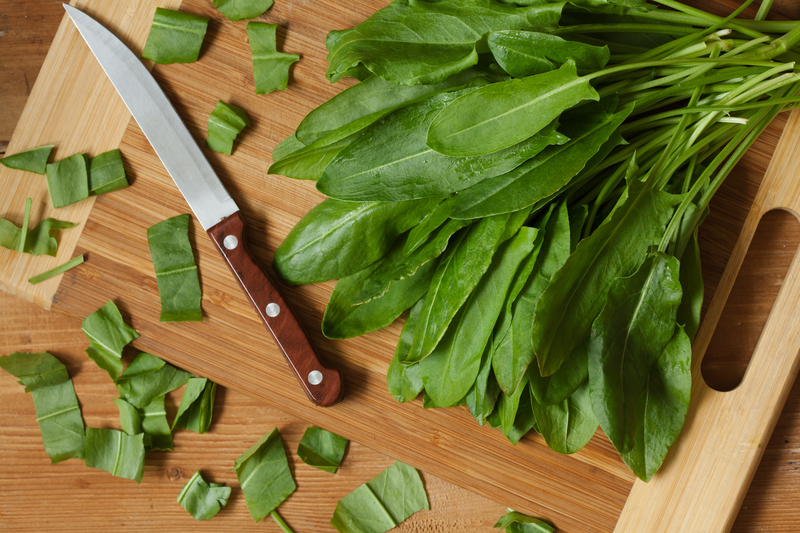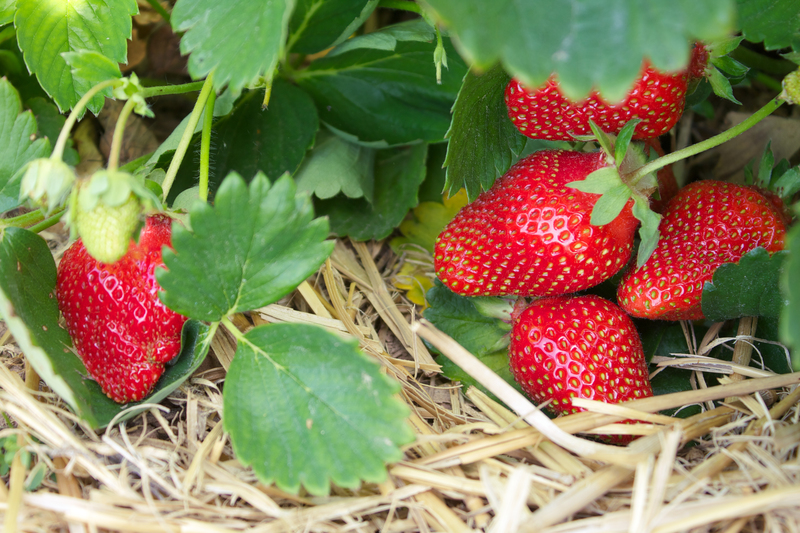Sculpting Hedges into Artistic masterpieces
Posted on 09/06/2025
Sculpting Hedges into Artistic Masterpieces: Exploring the Art and Science of Topiary
In the world of landscaping and garden design, there is an ancient and enchanting practice that transforms ordinary shrubs and bushes into living works of art. Sculpting hedges into artistic masterpieces is not just a trend--it's an enduring expression of creativity and skill. From the formal gardens of Europe to the whimsical public parks around the globe, masterfully pruned hedges captivate and inspire, turning green spaces into spellbinding realms. In this comprehensive guide, we delve deep into the art of hedge sculpting, exploring its history, techniques, popular styles, and tips for gardeners at every level.

What Is Hedge Sculpting?
Sculpting hedges is the refined art of trimming, shaping, and training living plants--usually shrubs or small trees--into ornamental forms or fantastical figures. Also known as topiary art, this practice dates back centuries, cherished by royalty and admired across cultures. Modern hedge artistry encompasses a spectrum from formal geometric shapes to imaginative animals, characters, and abstract designs.
Why Sculpt Hedges?
- Enhances curb appeal and garden aesthetics
- Provides structure and organization to landscapes
- Personalizes outdoor spaces with unique focal points
- Encourages plant health through regular pruning
- Offers a relaxing and expressive hobby for gardeners
No matter your motivation, creating artistic hedge masterpieces lets you leave a living legacy for years--if not generations--to come.
A Brief History of Artistic Hedge Sculpting
The origins of topiary sculpture can be traced to ancient Rome, where wealthy estate owners prided themselves on elaborate garden displays. Written records suggest that the art form traveled across Europe, taking particular root in Italian Renaissance gardens and later, in French and English estates.
- Renaissance Italy: Inspired by classical ideals of symmetry and proportion, landscape artists created geometric parterres and intricate hedge mazes.
- Seventeenth-century France: French formal gardens such as those at Versailles reached new heights, with vast avenues of clipped yew and boxwood shaped into cones, spheres, and animals.
- Victorian England: The era's fascination with novelty led to elaborately sculpted topiary menageries and garden art for both public parks and private homes.
Today, hedge sculpting as art persists worldwide, from topiary festivals in Japan to private backyards, thriving as a cherished blend of horticulture and imagination.
Best Plant Varieties for Artistic Hedge Sculpting
Choosing the right plant is essential for successful hedge shaping. The ideal species exhibit dense foliage, small leaves, flexible branches, and robust growth. Here are some favorites among topiary artists:
- Boxwood (Buxus) - Widely regarded as the classic topiary plant, boxwood grows densely and responds well to repetitive pruning."
- Yew (Taxus) - Popular for its versatility, longevity, and dark green, needle-like leaves.
- Privet (Ligustrum) - A fast grower that's easy to clip into clean lines and whimsical forms.
- Holly (Ilex) - Its glossy leaves and natural shape make holly perfect for festive or fanciful designs.
- Laurel - A sturdy, lush option for bold, large-scale structures.
- Myrtle and Japanese Holly - Smaller leaves and compact growth are ideal for delicate work.
Pro tip: Evergreen shrubs are typically best for sculpting hedges into artistic wonders, as they maintain year-round color and form.
Essential Tools for Artistic Hedge Sculpting
Investing in high-quality tools not only improves your accuracy but also minimizes plant stress. The most common topiary tools include:
- Hedge shears - For broad strokes and defining main shapes
- Pruning secateurs - For intricate detail work and indoor topiaries
- Topiary frames - Wire cages to help guide symmetrical shapes or complex figures
- Loppers - For tackling thick branches in mature hedges
- Electric shrub trimmers - Speed up uniform cuts for lengthy hedges
- Gloves and eye protection - Essential safety gear
Keep all blades sharp and clean to create crisp lines and prevent plant disease.
Popular Hedge Sculpting Styles
Hedge sculpting artistry ranges from classical to contemporary, allowing gardeners to personalize their landscapes with unique touches. Styles to consider:
1. Geometric Topiary
- Globes, pyramids, and cubes form the backbone of many historical gardens.
- Perfect for formal or symmetrical layouts.
2. Figurative Topiary
- Shapes like animals, birds, or people add a whimsical touch or thematic flair.
- Common in both public parks and private yards.
3. Abstract and Modern Forms
- Waves, spirals, and asymmetrical designs create visual drama.
- Ideal for modern and eclectic landscapes.
4. Seasonal and Functional Sculptures
- Topiary arches, green furniture, and living screens serve both decorative and practical purposes.
- Seasonal shapes such as holiday-themed figures bring gardens to life year-round.
Artistic hedge shaping is limited only by your imagination--and the time you're willing to invest.
Step-by-Step Guide to Creating Artistic Hedge Masterpieces
Turning a plain hedge into an artistic spectacle is a rewarding process. Here's a stepwise approach for beginners and aspiring hedge sculptors:
1. Plan Your Design
- Sketch your vision or find inspiration in garden magazines and online galleries.
- Start simple; geometric shapes are ideal for beginners.
- For complex figures, consider wire frames as guides.
2. Prepare the Plant
- Select healthy, well-established shrubs with dense foliage.
- Remove dead wood and shape the outline to approximate your design.
- Water well before and after sculpting to minimize stress.
3. Trim in Stages
- First, define broad shapes using hedge shears.
- Sculpt finer detail with pruning snips or topiary scissors.
- Step back frequently to check for symmetry and alignment.
4. Maintain and Refine
- Schedule regular touch-ups to maintain crisp angles and lush growth.
- Fertilize and mulch as needed to support vigorous plants.
- Treat pests or diseases promptly to keep your masterpiece healthy.
Patience is essential: Most living hedge sculptures require several growing seasons to reach their full potential.
Pro Tips for Artistic Hedge Sculpting Success
- Prune regularly--several times a year--to encourage dense growth and clean lines.
- Always trim on cloudy days or during cooler times to reduce plant stress.
- Use sharp, clean tools to avoid bruised branches and disease spread.
- Consider the mature size of your plants and allow space for growth.
- Improve soil quality with compost and organic mulches for robust health.
Famous Examples of Topiary as Artistic Masterpieces
Throughout history, some of the world's most renowned gardens have showcased hedge masterpieces that draw millions of admirers each year. Notable examples include:
- Levens Hall (England): Home to one of the world's oldest and grandest topiary gardens, featuring centuries-old yews shaped into chess pieces, peacocks, and geometric forms.
- Versailles (France): The grand parterres and mazes display the pinnacle of European formal topiary tradition.
- Longwood Gardens (USA): Features whimsical animals, cones, and spirals across sprawling grounds.
- The Topiary Park (Ohio, USA): An outdoor living recreation of Georges Seurat's Impressionist painting, brilliantly illustrating the artistic scope of sculpted hedges.
Inspiration from Around the World
- Japanese cloud pruning (Niwaki), which skillfully creates dynamic, undulating forms with pine and evergreen species.
- Portuguese palace gardens blend serpentine walls with symmetrical boxwood artistry.
- Modern art installations in urban parks worldwide--giant animal topiary, living arches, or imaginative forms for community enjoyment.
Common Challenges in Hedge Sculpting and How to Overcome Them
- Uneven growth: Prune lightly and frequently, rotating your angle of vision. Use guides or string lines for longer hedges.
- Pest and disease issues: Select disease-resistant varieties and remove infected branches immediately. Maintain good air circulation around plants.
- Slow development: Young hedges need a few years to reach sculpting size--plant early, and be patient.
- Maintaining shape: Frequent touch-ups are essential, especially in spring and summer when growth accelerates.
Don't be discouraged by early setbacks--each pruning session is an opportunity to learn and refine your technique.
The Future of Artistic Hedge Sculpting
As sustainable landscaping and outdoor art grow in popularity, hedge artistry continues to evolve. Innovative designers now integrate:
- Mixed-species topiaries for colorful texture and interest
- Living green walls that offer privacy and environmental benefits
- Edible topiaries using rosemary, bay, and other culinary herbs
- Smart irrigation and organic maintenance for eco-friendly sculpture gardens
Gardeners, artists, and landscapers alike find fresh ways to sculpt hedges into masterpieces, turning private and public spaces into ever-changing galleries.

Conclusion: Transform Your Garden with Artistic Hedge Sculpting
Whether you envision neatly clipped globes framing a walkway or an enchanted herd of living elephants entertaining guests, sculpting hedges into artistic masterpieces is a deeply rewarding endeavor. It combines horticultural expertise, artistry, and a touch of whimsy, allowing every gardener to shape a unique, living legacy.
Start small, practice patience, and let your creativity flourish--soon, your outdoor space can become a vibrant canvas for the enduring and ever-evolving art of hedge sculpting.
Frequently Asked Questions about Hedge Sculpting Art
-
How often should I trim shaped hedges?
Most topiary requires light pruning 3-4 times per year during the growing season to keep shapes sharp. -
Is topiary suitable for small gardens?
Absolutely. Even small pots with clipped myrtle or boxwood can be sculpted into charming miniatures for patios or entryways. -
Can I sculpt hedges without wire frames?
Yes, many gardeners work freehand, but wire frames are helpful for beginners or intricate designs.
Discover the possibilities--your garden's next masterpiece is waiting in every green hedge!

